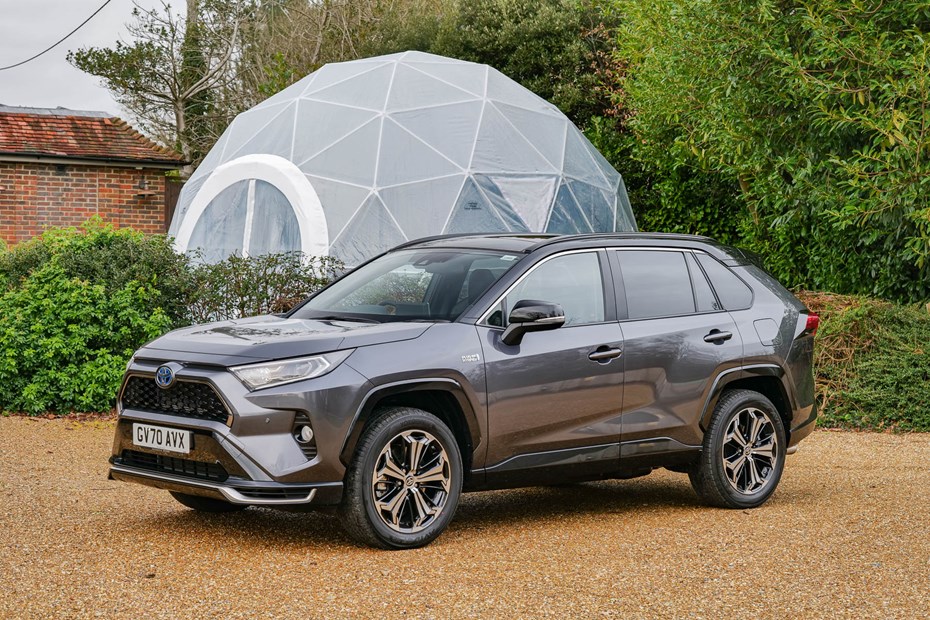For many drivers in Britain, the choice of used cars is still heavily biased towards petrol and diesel models. If you’re looking for a greener option without the commitment to going fully electric, a second hand plug-in hybrid car offers an excellent compromise.
It’s over a decade since the first PHEVs appeared in showrooms, with innovative models such as the Vauxhall Ampera, but it took Mitsubishi’s combination of aspirational 4x4 and electric power to get the public interested. Low CO2, low benefit-in-kind and smooth driving in town means the Outlander is one of the easiest used plug-in hybrid cars to find.
Now the technology has had time to mature, with more brands offering electrified cars, the Outlander is not the only pre-owned PHEV on the market. Here’s the Parkers’ Guide to the best used plug-in hybrids to buy in 2024.
Immensely capable Toyota + long warranty = pre-owned bargain
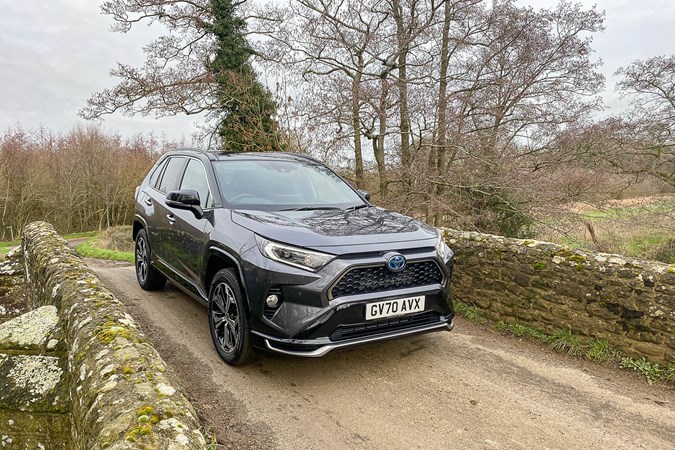

You can find the entry-level Design PHEV 2.5 for sale used at much the same price as the regular RAV4 HSD AWD – less than £30,000 – and unlike many of the cars on this page, it will still have more than three years of factory warranty left. That's thanks to Toyota’s 10-year/100,000 mile warranty extension scheme.
For that you get a 306hp PHEV that can cover over 40 miles of urban driving on battery power alone, and has all the grip and off-road benefits of the regular RAV4 AWD. Plus, the PHEV technology means the engine doesn’t have to work as hard to accelerate as the regular RAV4.
All this, and we have regularly achieved over 46mpg during real-world tests with a depleted battery. Even if you don’t plug it in, the RAV4 PHEV is an impressive hybrid 4x4 – and one of the few we'd recommend even if you only charge opportunistically.
Compare new car lease deals with your used car finance costs first
Find out more about the Toyota RAV4 with our full review
Pros
- Economical for ability
- Impressive EV range
- Warranty to 10 years old
Cons
- Boot space reduced
- Could be more luxurious
- 306hp, but not sporty
Second-generation 330e Touring (G20) is great value second hand
The original, F30 generation 330e is only available as a rear-wheel drive saloon, and the boot space falls from a generous 480 litres to just 375 litres – that’s smaller than a Golf. It’s the current, G20 330e Touring that gives the best value for money. Its full tailgate, taller roof, and folding seats alleviate the loss of underfloor boot space occupied by batteries. Although the 2.0-litre engine isn’t the smooth, sonorous straight-six of BMW legend, it musters up enough power alongside the motor to reach 62mph in 5.9 seconds.
BMW’s reputation for reliability is good, with the 3-series regularly topping the Fleet News FN50 results (which are based on real-world fleet data in the UK). The downsides are a short electric range (so you’ll want to plug in often to get those high mpg figures) and a rather harsh ride on M Sport suspension.
Financing a nearly-new BMW 330e? Check out the latest lease offers first
Want to know more? Read the 2013-19 3-series and 2020-on G20 330e reviews
Pros
- Quick, refined BMW
- Later 330e Touring impresses
- xDrive AWD option
Cons
- F30 is saloon only
- Reduced boot space
- Relatively short EV range
Economical, premium hatchback
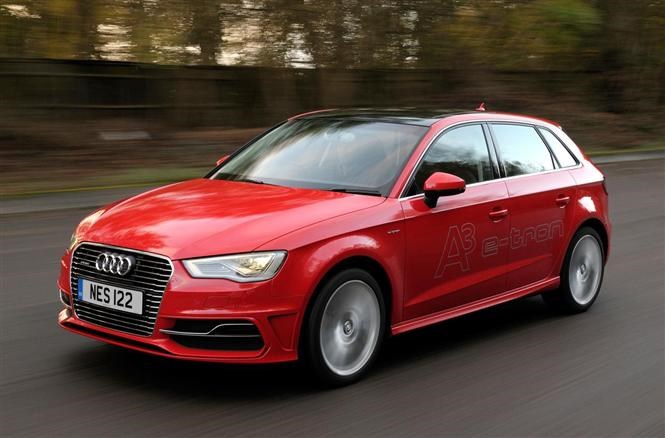

The EV-only range is limited by the small battery, but at 18-24 miles in the real world it’s still enough for meaningful savings in fuel and CO2, covering the type of short drive that petrol engines don’t get warmed up for. If you can’t plug in it’s still an economical motorway cruiser, though a Euro 6 diesel or conventional petrol may still be the better choice.
The hybrid A3 is only available as a five-door Sportback – the same limitation applies to the Golf.
To find out more, read our full Audi A3 Sportback review
Pros
- Premium image
- Small, but practical
- Long-distance comfort
Cons
- Ex-lease models basic
- Short EV range
- Poor long-distance economy
Electrified GTI retains that classic spark
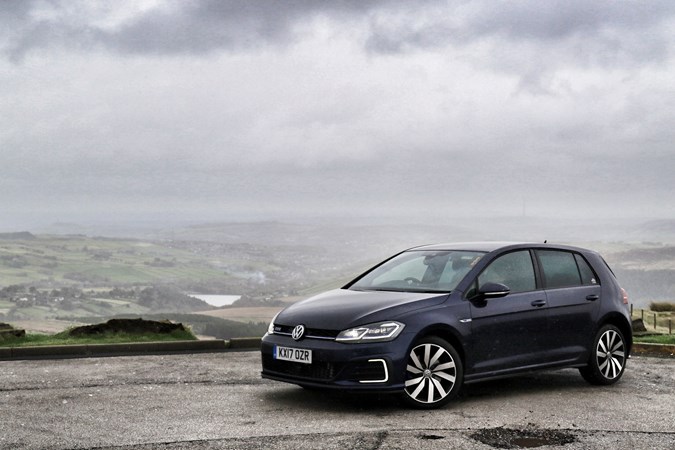

The GTE deserves the GT part, though. It combines an electric motor with a 1.4-litre turbocharged petrol engine for 204hp, and uses the battery power to boost mid-range shove as well. As such, it’s a responsible hatchback that’s still hot enough to keep in front of its ancestors (take note, Mk3) while delivering the 21st-century goals of low emissions, long life and good fuel economy.
It was so popular that VW had to stop making it after just a couple of years, because the battery factory couldn’t keep up with demand. Later models can be found as the Golf GTE Avance. The Audi A3 e-Tron provides many of the same benefits, and sold in greater numbers so it's easier to find. However, the GTE is a little sportier, and a older examples are good value for a used plug-in hybrid as well.
Compare new Golf GTE lease offers against your used car finance quotes first
Find out more about the VW Golf GTE in our full Golf Mk7 review and GTE long-term test
Pros
- Retains GTI handling
- Easy to drive, familiar
- EV range ideal for cities
Cons
- Economy poor on long drives
- Can sound coarse
- Audi A3 easier to find
Big Mini with a big name – and a small price
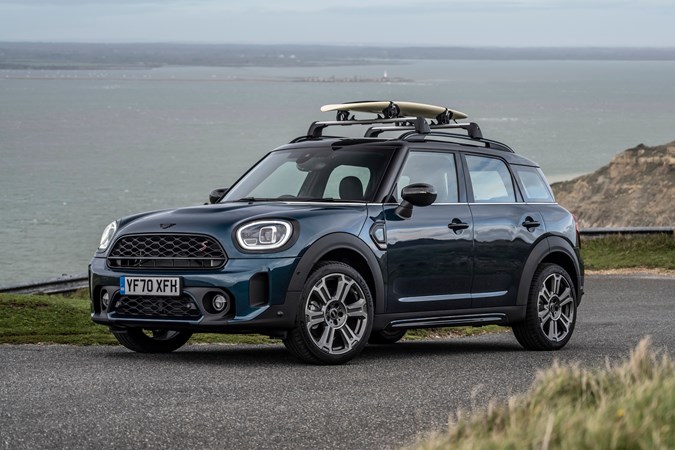

It has the advantage of all-wheel drive, but a lower electric-only range than some rivals. Fleet News ran an early example and achieved 42mpg, but reported one user getting between 46 and 60mpg by using the eco modes and more restrained driving. That last point matters, as the Countryman’s 224hp and 6.8s 0-62mph performance is complemented by handling that’s worthy of the Cooper name.
Colour, trim and options can change how any MINI feels, so shop around for the perfect specification, and consider looking for an approved-used model for an extended warranty as owners report some small irritations with trim and gadgets.
Financing your used car? Check new lease deals first
Find our more about the MINI Countryman in our full review
Pros
- Cheerful personality
- Quick, fun to drive
- AWD grip
Cons
- Feels bigger than it is
- Nice kit is optional
- Short EV range
Big 4x4,small fuel bills – if used wisely
.jpg)
.jpg)
Shop carefully and you’ll get one for well under £40,000 with below average mileage, though the best value package will take some patience making sure it has the right trim and options for your taste. Power comes from a 2.0-litre turbo four-cylinder, so forget the characterful V8 soundtrack. The upside is that if your main drives are around town, and you can plug in frequently (typical battery range is 20 miles), you won’t miss the sound of pumping petrol to feed the V8’s 15mpg urban appetite.
There is another compromise – the Range Rover Sport P400e can only tow 2,500kg, compared with 3,500kg for most Range Rovers. It’s also worth checking your insurance quotes, and making sure you have a warranty or look for an approved-used one as Range Rover fit and finish can be inconsistent.
Considering used-car finance? Check how much a new lease deal costs per month first.
Find out more, read our full Range Rover Sport review
Pros
- Off-road capability
- On-road refinement
- City-friendly EV range
Cons
- Potentially expensive repairs
- Needs the EV boost to move
- City-unfriendly size
The original 4x4 plug-in hybrid
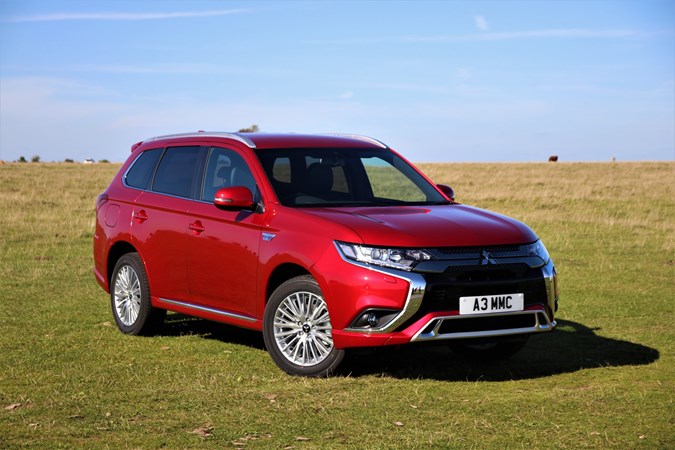

The 2018-on model will usually achieve more than 35 miles of battery-only range in summer, and has several improvements elsewhere for economy and reliability. It's better made, and nicer to drive overall. However, if you can plug in to recharge at home and use your car for short trips a lot of the time the early 2.0-litre model is one of the cheapest PHEVs you can buy, starting at less than £5,000 for private sales.
If you can’t plug in and are hoping the hybrid tech will improve economy, you should avoid the pre-2018 Outlander PHEV. It only works well if it’s regularly charged up – the Outlander is otherwise less economical than conventional models when relying purely on petrol. The 2.4-litre is slightly better in this regard, but you'll still find the diesel cheaper to run for long drives.
To find out more, read our full Mitsubishi Outlander used review and buying guide
Pros
- Affordable, plentiful
- Lots of space
- Rugged interior
Cons
- Thirsty if not plugged in
- Cooling system issues
- Late models poor value
Is it worth buying a used plug-in hybrid?
Yes, but only if you can charge it at a low cost (or free) at home, work, or any place you regularly park for a few hours. Next to the simplicity of a conventional petrol or diesel car, or the commitment of a full-electric model, the plug-in hybrid seems like something of a short-term solution.
If you do have off-street parking, it’s easy to take advantage of a PHEV. You should be able to charge even with a domestic outdoor socket – it’s even better if you have solar (a modest 1.7-2kW setup is plenty to charge most PHEVs during a summer day) to top up after a typical school run or other urban trips. In the right location a lock-up garage could provide enough roof area for off-grid daily charges.
Keep a PHEV topped up on off-grid power, and it’s like getting free fuel; with the return of EV tariffs, overnight charging is also cheaper than fossil fuels again. You don’t need a wallbox installation (though it’s nice to have if you get one of the larger battery PHEVs, such as the Toyota RAV4), as most plug-in hybrid batteries are small enough that a domestic 13A charger is enough to recharge fully overnight.
Brake wear in town is often reduced due to regenerative technology and if you do use a plug-in hybrid’s battery power for short trips, they are considerably kinder to the local environment than a petrol or diesel. However, many of the best used hybrid cars also retain enough battery to do that trip to the post office or school in the rain – without needing the engine.
I can’t plug-in at home – can I use a PHEV?
You can, but most of them are less economical than the conventional equivalent when fuelled by petrol alone. You may find lower monthly costs and better fuel economy, without needing to plug in, with the best new hybrid cars. To get a zero-emissions vehicle you can park on the road, a fully electric car with a large enough battery to use public charging less frequently can work quite well – though the cost of charging is often more expensive than a petrol car returning 30mpg.
Just so you know, we may receive a commission or other compensation from the links on this website - read why you should trust us.


